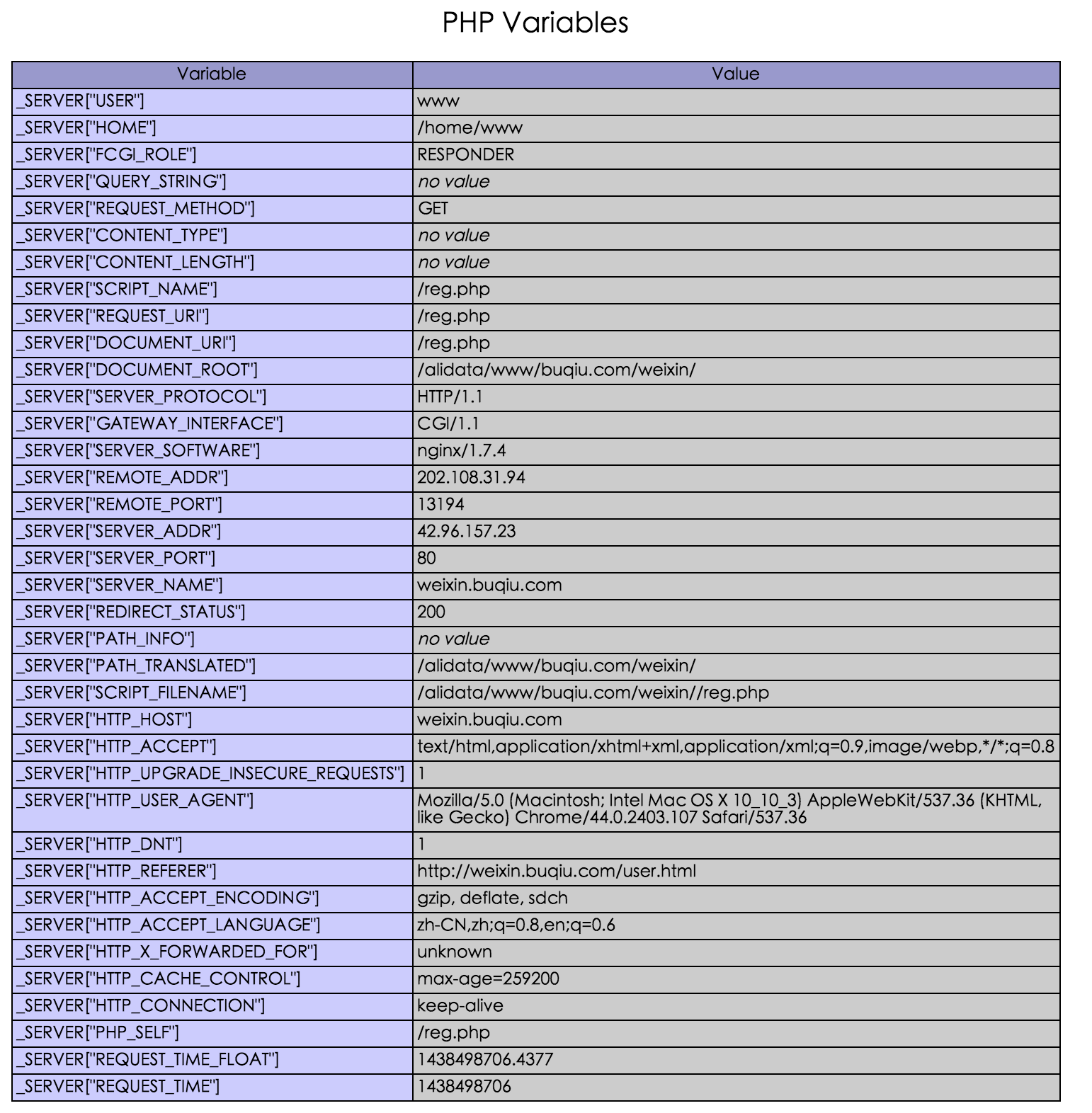PHP constants and variables environment variables
Environment variables We mainly use two environment variables, $_SERVER and $_ENV.
However, $_ENV is gradually abandoned by new versions of PHP.
[Key Points] Know where to check the name (key) and value (value) of environment variables, and remember and write down several commonly used environment variables.
Check the environment variables. We learned this on the first day of learning PHP:
<?php phpinfo(); ?>
In fact, environment variables are not something that you need to memorize. I know where to find the key of the environment variable. Just sum the value.
We learned phpinfo(); and printed out a bunch of messy things. Let’s learn about the environment variables part of it today.
In the URL where you execute phpinfo();, pull down the page and turn the page to see if you can find the part in the screenshot:

_SERVER['middle value'], we need to understand the meaning.
If we need to display where the phpinfo(); page file we are currently accessing is located, we can execute:
<?php //我在上圖左側(cè)找到的一項(xiàng),在前面加上了一個(gè)$(美元符),就顯示出來(lái)了當(dāng)前文件的路徑 echo $_SERVER['SCRIPT_FILENAME']; ?>
Let’s learn about the key names and values ??of some commonly used environment variables. Meaning:
| Key name | Meaning |
|---|---|
| $_SERVER[ "REQUEST_METHOD"] | Method to request the current PHP page |
| $_SERVER["REQUEST_URI"] | Requested URI |
| $_SERVER["SERVER_SOFTWARE"] | What kind of server are you using |
| $_SERVER["REMOTE_ADDR"] | Customer’s IP address |
| $_SERVER["SERVER_ADDR"] | Current server’s IP address |
| $_SERVER[ "SCRIPT_FILENAME"] | The path of the main requested file |
| $_SERVER["HTTP_USER_AGENT"] | The computer and browser currently accessing this URL Situation |
| $_SERVER["HTTP_REFERER"] | Superior source (the address from which the user entered the current web page) |
| $_SERVER["REQUEST_TIME"] | Current time |
URI and URL are both web addresses, but URL contains the host address part, while URI does not contain the host address part, for example:
http://ipnx.cn/ abc.php?username=php The above is a URL (Uniform Resource Locator), and the URI is the part without the host and (http://)
protocol:
abc.php?username=php
time
Pronunciation: [ta?m]
Explanation: time
file
Pronunciation: [fa?l]
Explanation: file
name
Pronunciation: [ne?m]
Explanation: Name
sowftware
Pronunciation: [?s?:ftwer]
Explanation: Software
address (abbreviated addr)
Pronunciation: [??dres]
Explanation: Address
remote
Pronunciation: [r??mo?t]
Explanation: Remote, remote
server
Pronunciation: [?s?:v?(r)]
Explanation: service, server
method
Pronunciation: [?m?θ?d]
Explanation: method
port
Pronunciation: [p?:rt]
Explanation: Port














